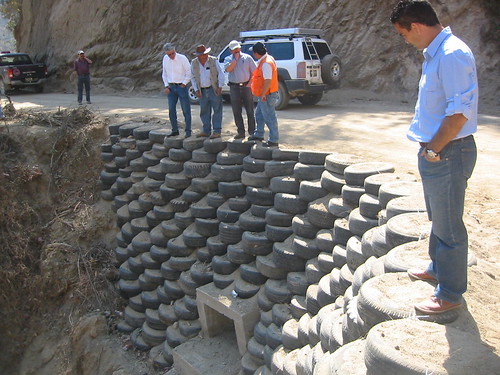PUBLIC POLICIES FOR DRR AT NATIONAL, REGIONAL AND CONTINENTAL LEVEL
 Photo: Margarita Villalobos / UNISDR |
1. BACKGROUNDDisaster risks related to hazards such as tropical cyclones, flooding, earthquakes, droughts and tsunamis; as well as risks related to technological hazards 1, constitute an important challenge for development. During 2011 only, 302 disasters took 29.782 lives, affected 206 million people and caused damages estimated in 366.000 million dollars. |
_______________________________________________________________________________________________
Whereas developing countries and the most vulnerable people are under a great risk, losses such as the eastern Japan large-scale earthquake and tsunami, show an increase in global social and economic losses due to the increasing magnitude and frequency of disasters. Therefore, the disaster risk reduction (DRR) constitutes one of the major challenges for the region´s sustainable development, and in this context, the reduction of vulnerability and exposure to risk, as well as the increase of resilience, require an integral approach (public and private) for the incorporation of strengthening mechanisms such as public and private investment planning systems on infrastructure and social protection.
The Hyogo Framework for Action 2005-2015 (HFA), the international agreement that guide the governments, communities and private sector to promote a culture of prevention and disaster management in order to minimize the loss of human lives and economic damages due to natural hazards and increase resilience at regional, national and local level; establishes five priorities for action that draw practical directions for all the key actors involved in disaster risk reduction.
2. PUBLIC POLICIES FOR DRR AT NATIONAL, REGIONAL AND CONTINENTAL LEVEL
The increasing exposure of national assets and the mortality risks due to natural hazards, directly impact the countries' human development and shows how countries and communities still face tough difficulties and unequal levels of progress when it comes the time to undertake policies towards the reduction of their vulnerabilities.
According with the results from the self-valuation of the countries in the LAC region presented in the midterm HFA 2009-2011 report, there is a gap in the efforts towards the integration of DRR within the development policies. There are several practical connections between the disaster risk management, the climate change adaptation and the sustainable development. These connections have not been totally internalized yet in the ways national governmental institutions, international development organizations and the United Nations system itself tackle disaster management. It is critical to continue harmonizing, integrating and incorporating disaster risk reduction within poverty eradication and sustainable development programs and policies.
Reducing disaster risk and strengthening resilience are increasingly perceived as part of a new paradigm of development in which the wellbeing and equity are fundamental values, and natural and human resources are essential for planning and decision making processes. Therefore, it is imperative to go deeper on the assessment of national and regional development policies that have been successful in generating governance mechanisms, channeling of resources and political impulse to successfully tackle underlying disaster risk factors at both national and regional level.
3. SESSION GOAL
The goal of this session will be to synthesize through the discussion and review of concrete experiences, critical points in successful processes followed by the countries towards the development of national and regional policies that had generated important changes and progresses regarding the integration of DRR to development. Beyond the concrete experiences, the discussion will aim to identify a group of elements and critical steps within the national or regional policy formulation processes that had been successfully implemented and could be followed as guidelines to formulate a roadmap for a plan of action in countries and sub-regions, in order to tackle underlying risk factors within the sub-regional and national planning processes towards the fulfillment of the HFA priorities.
4. SESSION SCHEME AND ISSUES TO BE ADDRESSED
First Panel: Key elements in the national and regional public policies development process
Regional policies guidelines
a. Case Study
b. Challenges, limitations, strategies
c. Process recommendations
National guidelines
a. Case Study
b. Challenges, limitations, strategies
c. Process recommendations
Guidelines for the support of a sub-regional plan of action Second panel:
Equity on Disaster Risk Reduction Policies
Public policies for DRR: Access to water and land
a. Case Study
b. Challenges, limitations, strategies
c. Process recommendations
Third panel: Transversal Aspects on Disaster Risk Reduction Policies.
Public policies for DRR and gender focus
a. Case Study
b. Challenges, limitations, strategies
c. Process recommendations